
Social Media Engagement
Social media engagement: What it is and tips to improve it
Struggling to boost engagement on your social media posts? This article delves into what social media engagement is and offers practical tips and examples to get you on track to increase engagement with your audience. Plus, you’ll learn how to streamline and scale your engagement efforts Sprout.
Reading time 12 minutes
Published on June 26, 2025

Table of Contents
Summary
- To increase your social media engagement, it’s crucial to know your audience and platform. Align your content strategy with the platform your target audience uses most, and tailor the content format (video, image, etc.) to that platform's trends. Use data to then discover what resonates with your audience and gets them involved.
- Building community and delivering social customer care are redefining what engagement means. Respond to comments, answer DMs and address customer questions in real time to show up as active participants in your audience’s experience. This responsive, relationship-driven engagement strengthens loyalty and turns followers into advocates.
- Tactics like giveaways, questions and humor to encourage your audience to interact with your content by liking, commenting and sharing. Fostering a two-way conversation is one of the best ways to create meaningful engagement on social media.
Social media engagement is the bread and butter of social media marketing. Many brands want more engagement on their social media posts but don’t know what else to do or are stuck in the same old strategy. Plus, feed algorithms are tough to maneuver given they change often—sometimes without notice.
However, engagement today goes beyond publishing content and getting likes and shares—it’s also about how your brand shows up in return. Responding to comments, messages and support requests is essential to today’s engagement strategy. When brands show up consistently and build genuine community, they foster deeper connections and trust.
In this article, you’ll learn why the best social media engagement strategies center on community and care, tips on how to increase your social media engagement and how to measure it effectively.
What is social media engagement?
Social media engagement is an umbrella term for actions that reflect and measure how much your audience interacts with your content. Social media engagement can include likes, comments and shares, but varies by platform.
For example, on Facebook, engagement may include reactions such as like, love or wow, comments, shares and clicks on links or photos. While on Instagram, it might also involve story replies and saves. Similarly, on X (formerly Twitter), it could include retweets and quote posts.
High engagement often signals that your content is resonating with your audience, building stronger brand affinity and boosting visibility through algorithmic favor.
When looking at engagement numbers between months or even years, a birds’ eye view is great at identifying a trend. But you need several metrics to understand how to improve and uncover the bigger picture. The trick is understanding what engagement is on a broad level and how to examine it at a micro-level.
Beyond numerical metrics, a brand’s role in social media engagement is to set the tone for connection. By leading with authenticity, brands like you invite their audience into a shared space where consumers feel seen and valued. When a brand starts conversations, listens actively and shows up consistently in comments, messages and community spaces, it’s showing audiences that it invests in meaningful interactions.
This approach to social media engagement boosts your visibility and increases customer engagement on social media. But more importantly, builds trust and deepens relationships with your audience by reflecting your brand values, culture and care in every interaction.
Why the best social media engagement strategies center on community and care
The best social media engagement strategies center on community and care because they create lasting, mutually respectful relationships instead of just fleeting attention. Effective social media engagement strategies treat every interaction as an opportunity to contribute, not just communicate.
Engaging with customers on social media
When brands center their approach on their audience, they move from simply posting content and messages to actively shaping a space where people want to show up. It’s about creating relevance through relationships as the driving force behind customer engagement on social media.
Budget airline RyanAir is a popular example of a brand where people often show up in the feeds to engage and become part of conversations. The brand’s penchant for leaning into irreverent humor on social media and playfully engaging with customers has built a distinct brand voice that thrives on relatability and internet culture.

Source: Twitter(X)
Similarly, a fitness brand that replies to follower progress updates with encouragement and tailored tips isn’t just responding—they’re reinforcing a shared journey. Or a skincare company that quickly resolves product questions in the DMs while inviting feedback in public comments shows it values both the customer and the conversation.
These moments build emotional equity, turning audiences into communities and transactions into trust.
Why should you talk directly with your social followers and prospects?
Talking directly with your social followers and prospects helps build real, human connections because it goes beyond passive content consumption. When you engage in conversations, whether by replying to comments, replying to questions or joining discussions, you show that your brand pays attention to audiences, and is approachable and invested.
This direct interaction turns followers into participants, making them more likely to engage with you and eventually, advocate and convert.
How to manage social media conversations to improve engagement
Managing a high volume of social media conversations across multiple platforms can be overwhelming. Responding promptly and personally is crucial for maintaining engagement and customer satisfaction.
How to manage social media conversations with Sprout Social
Sprout Social’s Smart Inbox is your command center for all incoming social messages. Instead of toggling between networks, you get a unified stream of every message, comment, mention and even review from platforms like Facebook, Instagram, X/Twitter, LinkedIn and TikTok. This centralization means you never miss an opportunity to engage.
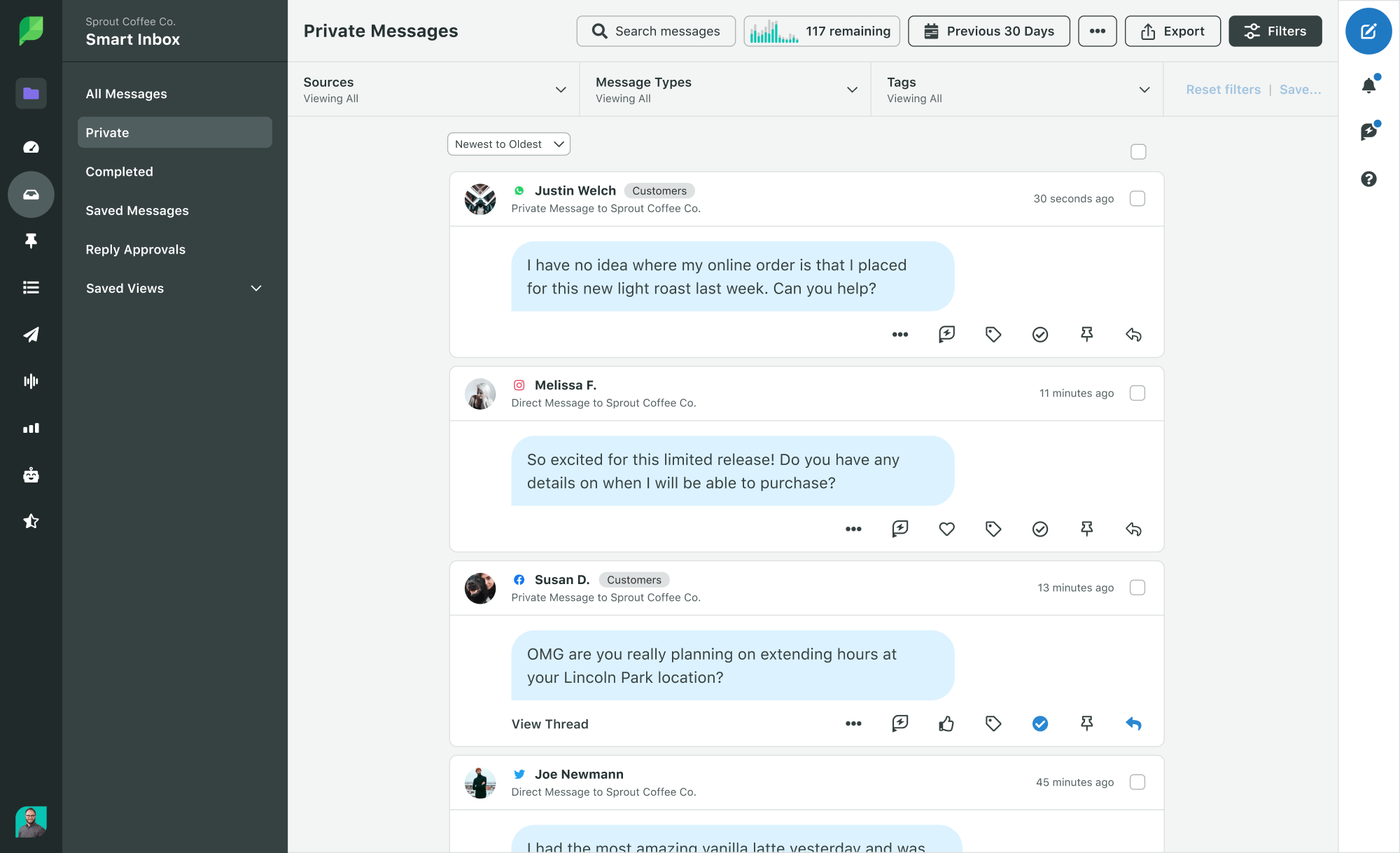
From a strategic perspective, the Smart Inbox empowers your team to deliver timely, consistent and personalized responses. It makes work easier, speeds up responses and supports your team to ensure every customer interaction is handled well, fostering stronger relationships and a more positive brand image.
By centralizing communication, you gain a holistic view of your audience’s needs and sentiment, enabling more informed engagement strategies. Curious to see how it works? Start a free trial today.
Start a free Sprout Social trial
Tips for increasing your social media engagement
Here are some ways to spark more meaningful interactions on your social channels. Apply these tips to boost engagement and build stronger audience connections.
1. Set goals and define metrics
It’s important to understand the various social media metrics and what they mean on each platform. This is because your social media goals determine which metrics you use. For every goal, you need a related metric, which will determine if your social strategy is working or not.
Set clear engagement goals so you know what to focus your content efforts on. If you want more engagement on your posts, focus on creating interesting content. The metrics that tie with it will be post engagement specific: how many people interacted with your posts and what types of engagement did they execute?
To get a fuller picture of your engagement, measure both inbound and outbound interactions. This will tell you how you’re faring while responding to customer queries and requests, as well as metrics on the conversations you initiate on social.
Understand your platform
Each platform has its own metrics, trends and culture, so you must adjust your social media engagement strategy to accommodate each network’s nuances.
There are over 20+ social media networks brands use today, but this doesn’t mean you should join each one. Do your research and consider which social media apps are the best for your business and your audience, which leads us to our next tip.
Know your audience
The key to improving your social media engagement is understanding your target audience—the group of people who are most likely to be interested in your product or service.
For example, if you’re a B2B company, LinkedIn could be the best fit since it centers on professional networking and many B2B brands are already active on the platform.
Your brand is making content for your audience, so always keep them in mind, from deciding what content to create to determining the best times to post on social media.
Understand the components of an engaging post
Knowing where your audience spends most of its time on social gives you an edge in terms of increasing engagement. The 2025 Sprout Social Index ™ shows that while consumers are present on almost all social media platforms to explore social trends and participate in cultural moments, they are most likely to have and use well-established networks like Facebook, Instagram and YouTube. If limited to just one social media platform, Facebook would be their top choice (90%), with Instagram coming in a close second at 82% and YouTube standing at 76%.
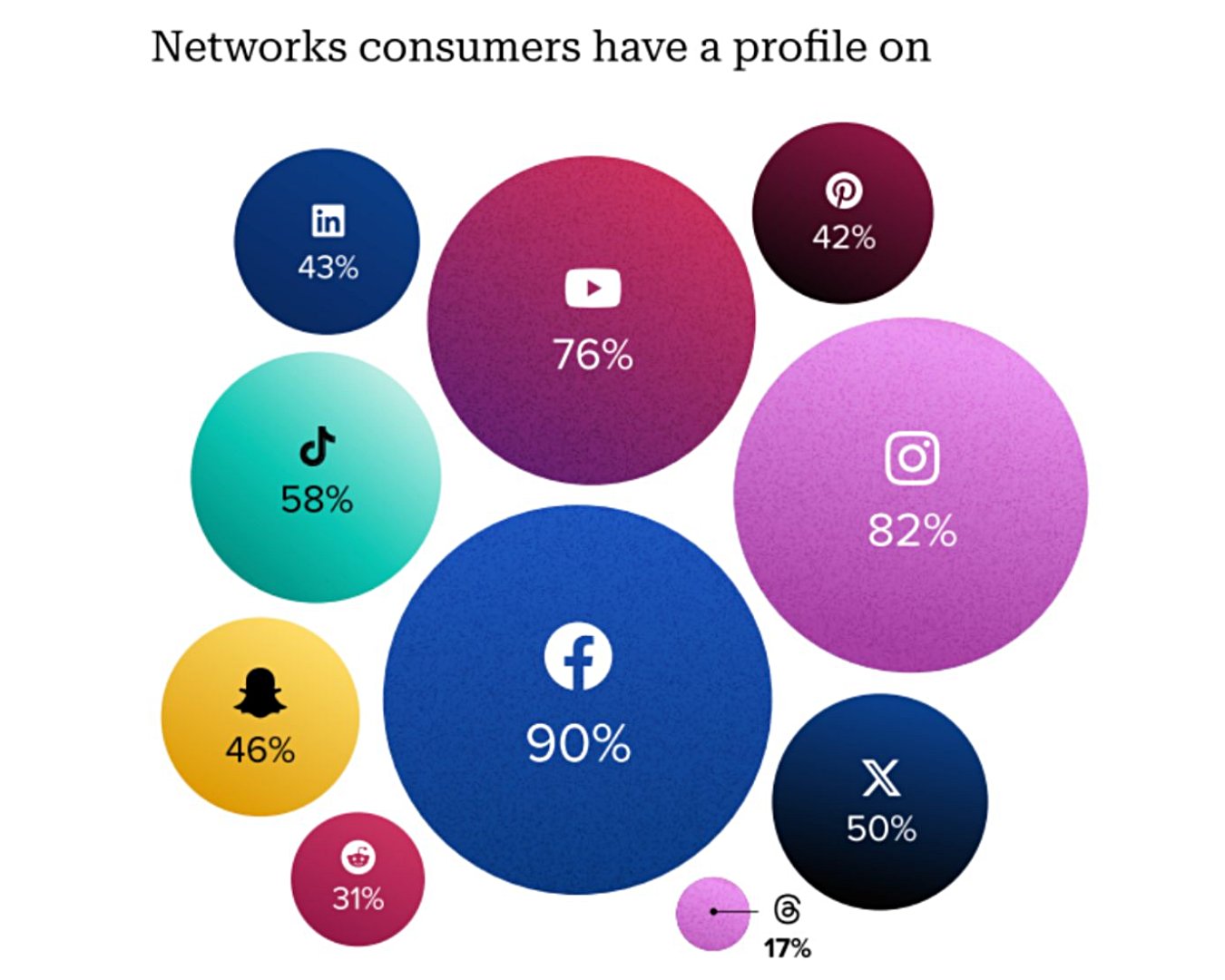
Create shareable content
You might be familiar with the phrase, “Don’t forget to like, comment and share,” but there are many other ways to increase your social media shares outside of explicitly asking.
For example, visual content like short-form video and images are more likely to be shared. Consider leaning into making more posts that feature either, or both, to enhance customer engagement on social media.
If you create shareable content, your social media engagement will increase. People on social media enjoy sharing posts they enjoy, admire or find valuable, so create and curate content that will prompt your followers to hit the share button.
Know when to post on social media
Knowing the best time to post on social media is another key to increasing your engagement. Identifying the best time to post based on your platform and audience will help you determine when to prioritize upcoming posts.
Knowing how often to post on social media is equally important because you don’t want to flood your audience with too much content. And according to The 2025 Content Benchmarks Report, now’s the time for brands to start posting less. You want to strike a balance that allows you to maintain an active social media presence.
Build a community to boost engagement
When brands focus on building a genuine community, engagement becomes a natural outcome. People are more likely to interact with content—and with each other—when they feel like they belong. When you encourage conversations, spotlight user contributions and create shared moments, it helps your audience feel valued and connected. As that sense of community grows, so does organic engagement, with followers more inclined to comment, share and advocate for your brand.
Sprout’s community, The Arboretum, is an example of a brand community where like-minded social professionals come together to share soundbites, ask questions and participate in contests and giveaways.

Source: Community.sproutsocial
Execute your strategy
Get into the habit of testing, iterating and experimenting with your social media marketing strategy. Social media is ever-changing, so your strategy needs to evolve over the year as well. Use engagement data to guide what’s working—whether it’s content format, timing or tone—and adjust accordingly. Staying flexible allows your brand to meet your audience where they are and keep interactions fresh and relevant.
Ideas for engaging social media posts
Here are some tried and tested creative ideas to spark social media engagement and get your audience talking.
Run a giveaway with other companies
One of the fastest ways to get engagement with your account is to host a giveaway. People love to get free things, and if you make it an engagement-focused giveaway, it can help you hit your goals. Many of these contests also ask followers to like, comment, tag a friend and/or follow for entry.
Here’s an example of Disney Pin trading App MagicPin hosting giveaways for a 3-day stay at Disneyland.
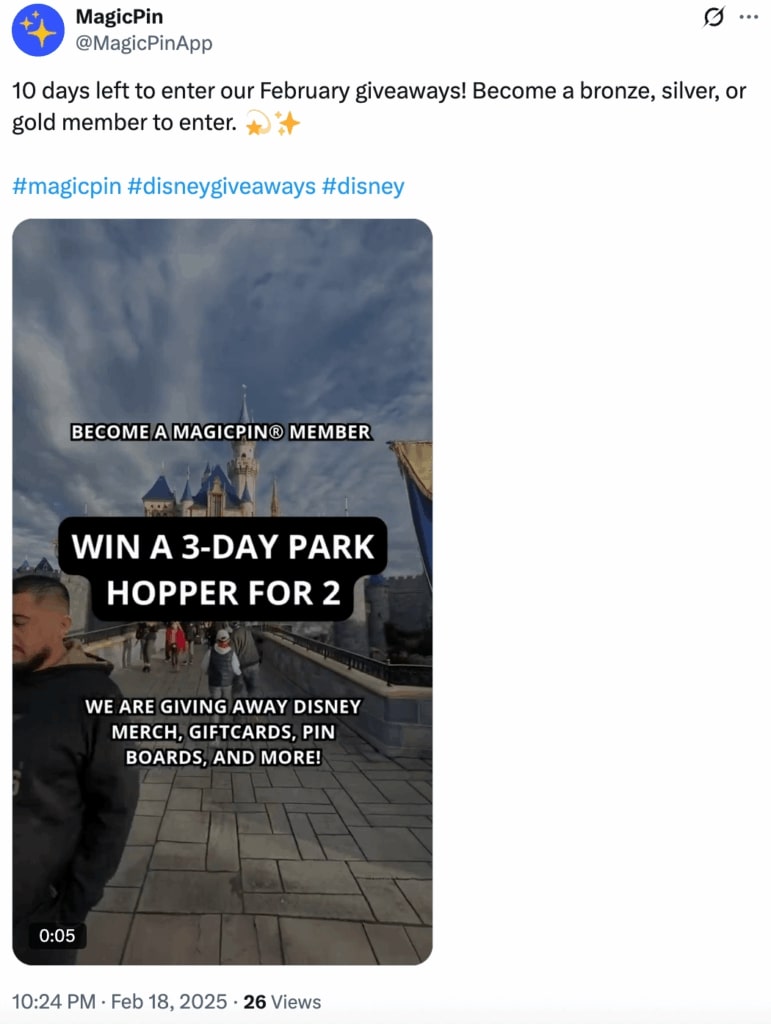
Source: Twitter(X)
These X contests and Instagram giveaways are common, but can be done on other platforms too. You can even host the contest across different platforms.
Get creative and funny
Humor goes a long way on social media, especially if it’s the type that your audience enjoys and engages with. Discord is known for it’s lighthearted, whimsy tone on X. They use it in the below post to show off their mascot.

Source: TikTok
Although we encourage creativity, note that humor isn’t necessarily right for every brand or industry. The 2025 Index report found authenticity, relatability and entertainment are the most important traits of brand content.
Think beyond feed posts
Feed posts aren’t the only types of posts available to you for engagement. Direct messages, replies and story interactions all count toward engagement numbers.
Branded Facebook Groups, like the Instant Pot Community, are a great way to increase engagement beyond traditional promotional posts.

Source: Facebook
Electric cooker fans can join the public group to ask questions, share recipes and connect with other foodies who love cooking with their Instant Pot.
The group has over 3.1 million members, but the brand limits promotional posts within the community. Instead they use, “New Product Monday” to showcase a new product the community might enjoy. They also offer several guides to help members learn how to use their Instant Pot.
Brand partnerships
Another tried-and-true strategy for customer engagement on social media–and to drive sales–is partnering with other like-minded brands to produce something fun and interesting.
However, even unusual partnerships can work if executed correctly. Dunkin’ Donuts and e.l.f. provide a great lesson in brand collaborations 101 with their donut-themed line of cosmetics.
The comments and likes revealed their audiences appreciated the unlikely pair’s products.
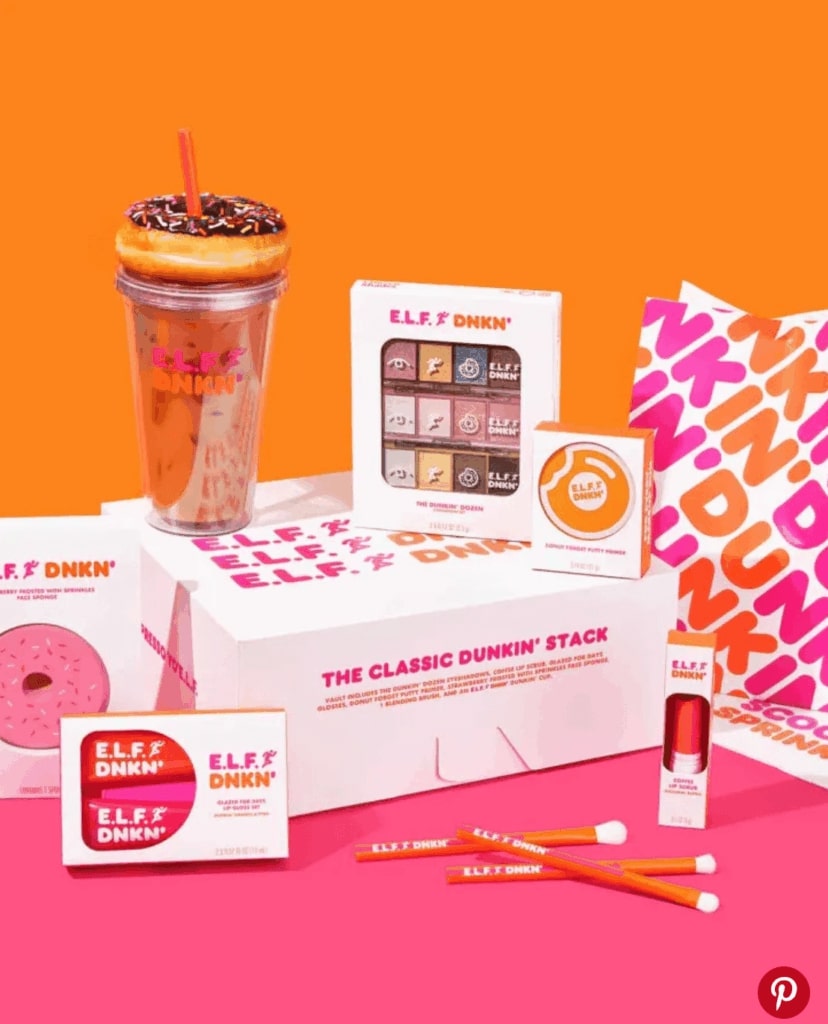
Source: Thekitchn.com
Partner with influencers
Partnering with influencers helps brands increase social media engagement by bringing authenticity, reach and relatability to the table. An influencer’s followers trust their opinions, which means when influencers promote a product or service, it’s often less of a sales pitch and more like a personal recommendation.
This trust translates into higher engagement—likes, comments, shares and saves—as audiences interact with content, ask questions and share experiences. Influencers also know how to craft content that resonates with their audience’s preferences and behaviors, which increases the chances of driving conversation and brand awareness.
For example, influencer Brook Monk, known for her GRWM (Get Ready With Me) videos boosts beauty brand engagement by seamlessly integrating products into her daily routines, often sparking thousands of comments and shares.
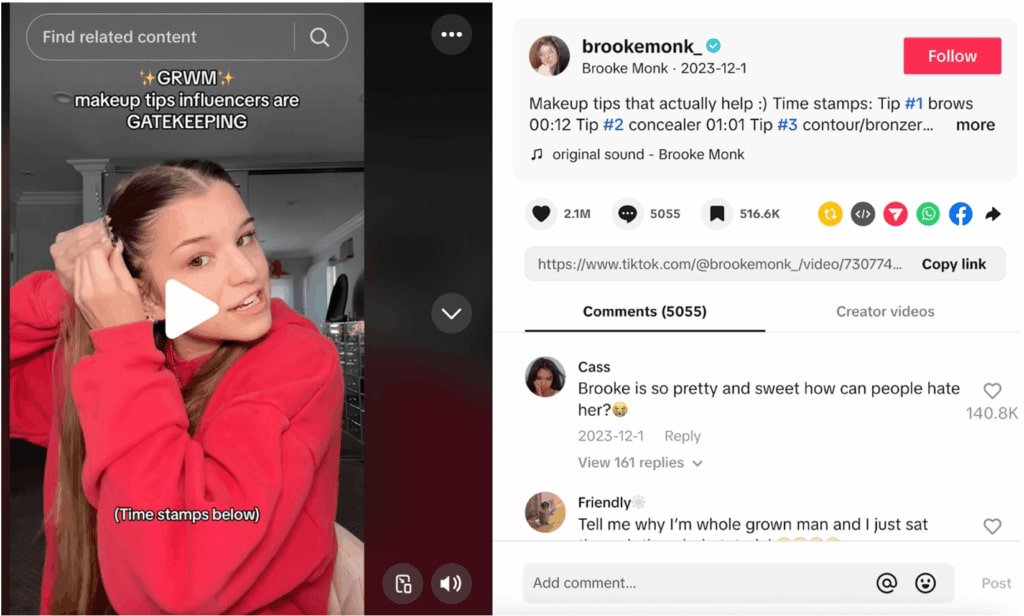
Source: TikTok
Similarly, CeraVe partnered with TikTok to present the 2023 TikTok Creator Of The Year Award, which took place in Sydney. The event eventually became one of the most talked-about TikTok moments.
How to measure social media engagement
To measure social media engagement effectively, track both inbound (likes, comments, shares, saves) and outbound metrics such as comments you leave, replies you send or conversations you start on other profiles. Let’s dig deeper into both of these engagement types.
Understand the two types of engagement: Inbound and Outbound
Inbound engagement is any engagement from an audience. This could include comments, retweets, photo tags, mentions in captions or LinkedIn company page comments
Outbound engagement is your response in the form of comments or reactions to the comments/engagement from your audience.
Inbound engagement, along with your customer service metrics, gives you insight into your performance as an accessible and relatable brand. While outbound engagement metrics will show you if you’re on the right track to fostering brand visibility, audience relationships and showing up where your audience already is.
Know where to find engagement metrics
Most major social media networks like X, Instagram and TikTok allow you to view your engagement metrics on their native analytics. These native dashboards allow you to see engagements including likes, comments, shares, impressions and more.
You can also use third-party social media management tools like Sprout Social to help you view and understand your inbound and outbound engagement metrics in one place.
Inbound engagement metrics
See what posts performed the best on social media and received the most engagements like comments and reactions. In Sprout, you can view engagement data by profile in the Post Performance Report, which gives metrics for each piece of published content. Measure impressions, reach and post link clicks and filter by network, post type, content type and tags to accurately track your inbound engagement rate.
In the below example, the number of Instagram engagements are added up for you. Along with engagement rate, you can view impressions and average reach per post.
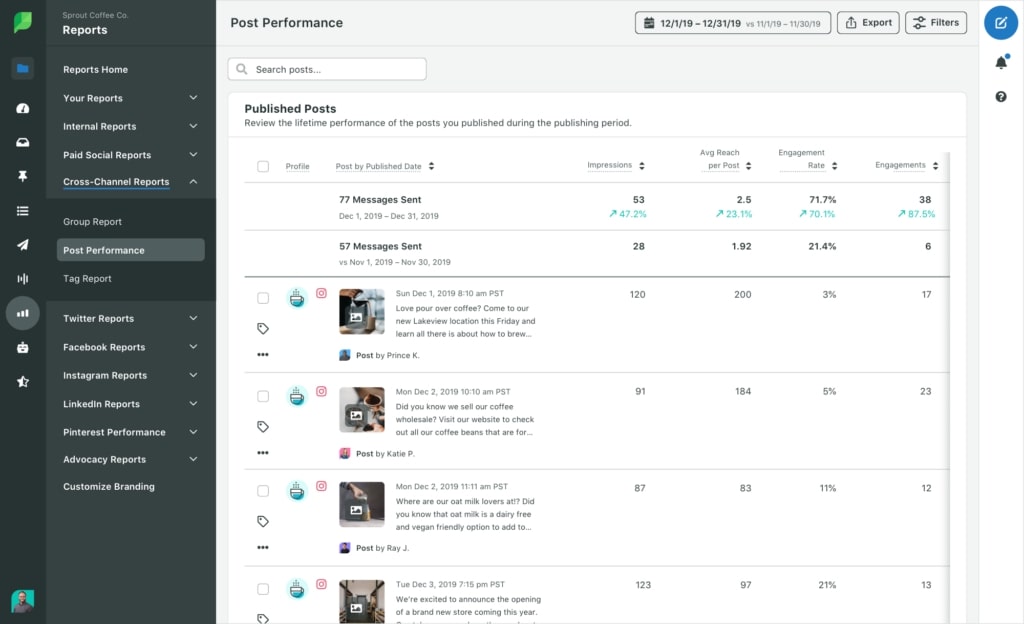
If engagement drops week over week, it’s a sign your posts may need tweaking to better resonate with your audience. And if a post outperforms others, note what made it stand out—it can guide the type of content to focus on for better engagement.
Further, collect engagement metrics from your campaigns using the Tag Performance Report. You’ll see metrics for your campaigns and tags that’ll show you total published posts, engagement and impression rates. Also, view metrics on specific tagged posts or messages.
Other reports, like the Profile Performance Report, show you important profile performance metrics such as impressions and engagements. Plus, it shows audience growth and message volumes across your profiles.
Outbound engagement metrics
Gather your outbound engagement metrics to see how you fare in responding to customer interactions, including comments and queries. Use the Inbox Team Report in the Smart Inbox to get deeper insights into your team’s performance with metrics like response time and resolution time.
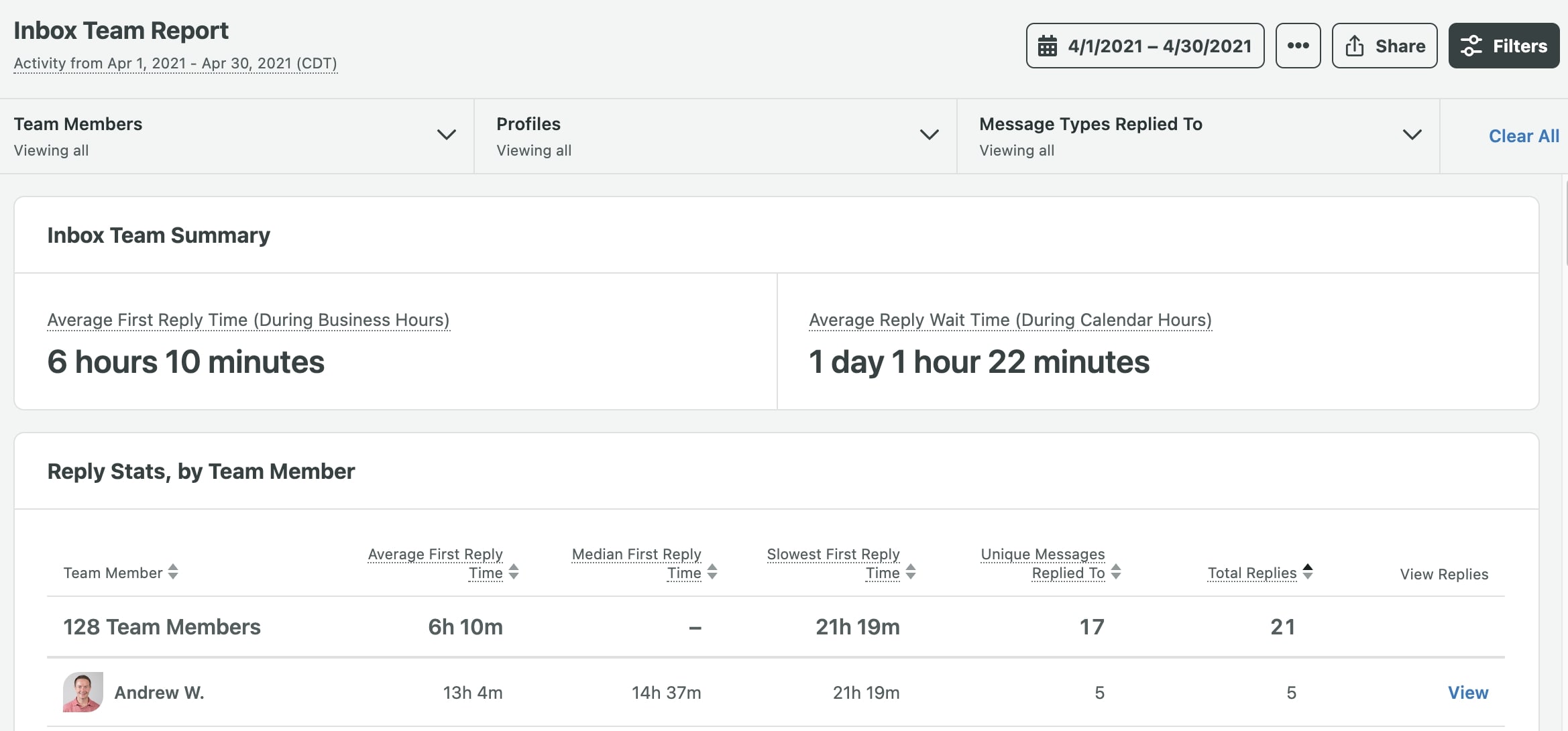
You can track your social customer care engagement through the Case Management Report by tracking metrics like average first response time and average reply time. Also track individual team member performance with the Case Team Activity Report to ensure you’re providing your team with support and training to improve engagement rates.

Create a social media engagement plan
Our tips and brand examples will help you increase your customer engagement on social media. Continue looking for brand examples like the ones we provided for inspiration because this is just the beginning of your social media engagement plan journey.
Use our 30-day social media plan to help you design and execute more social media engagement ideas. All you need to do is fill out the template to continue improving your engagement metrics.
Additional resources for Social Media Engagement
Instagram engagement rate: the ultimate guide to calculation, benchmarks and best tips
Audience engagement: What it is and tips to improve it
Audiences are tuning out: 6 ways to overcome declining social engagement and channel fatigue
How to boost your TikTok engagement rate and calculate it
Social media engagement: What it is and tips to improve it
11 proven strategies for improving Instagram reach in 2025
How to manage multiple social media accounts
Social media conversion: 10 Ways to boost your conversion rate
9 Customer engagement tools for fostering meaningful connections in 2025
How to create an effective proactive marketing strategy
Link in bio: The complete guide to maximizing engagement
Increase YouTube engagement: 10 ways that actually work
The marketer’s guide to reporting on social video engagement
5 strategies to amplify your Twitter engagement
















Share